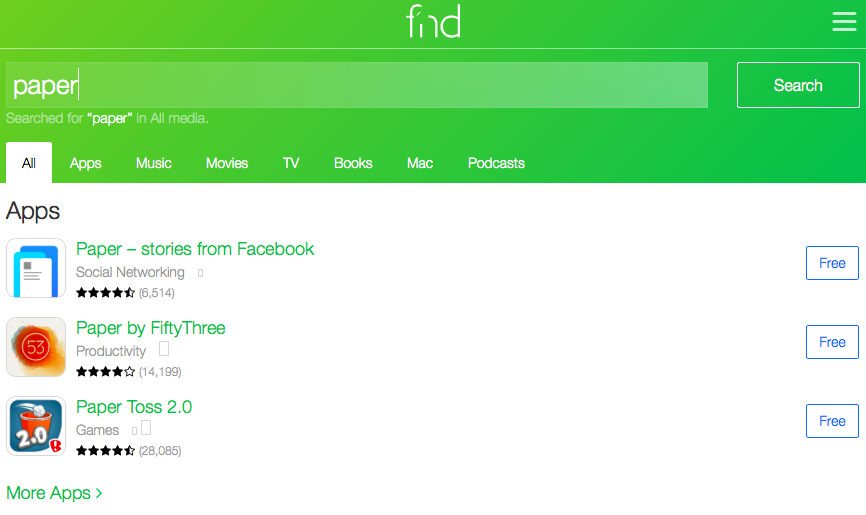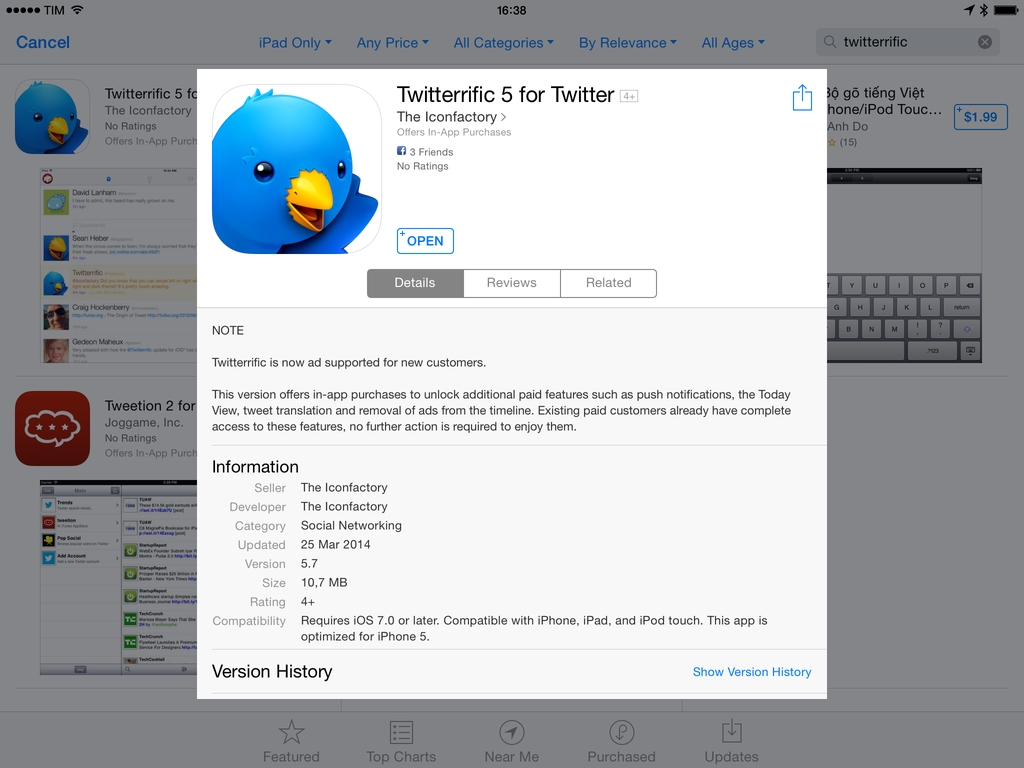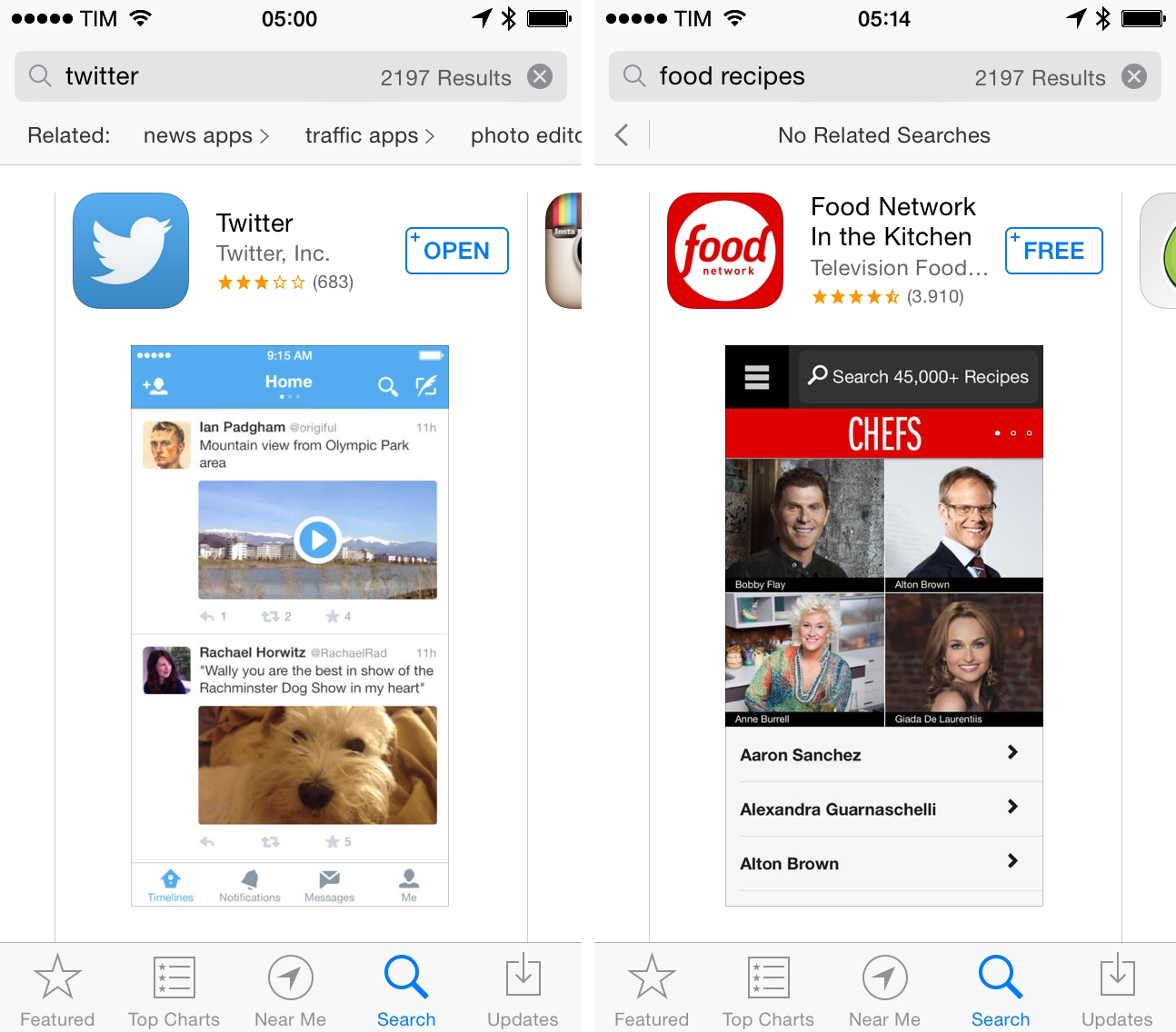Created by Jeremy Mack and Ryann Pierce and launched during EmberConf yesterday, fnd is a new iTunes search tool that allows users to search for any kind of iTunes content through a fast and responsive web app available at fnd.io.
While Apple’s iTunes and App Store clients for OS X and iOS ship with search and browse functionalities built-in, they aren’t, arguably, the fastest or most efficient ways to scroll through hundreds of items and find a specific song or app on the iTunes Store’s vast catalogue of content. On desktop computers, search through iTunes is slow, clunky, and based on an old iOS 6-inspired design that is inconsistent with Apple’s revamped iTunes Store and App Store apps on iOS 7. On the iPhone, the native App Store client received solid improvements in iOS 7, but search is still limited to cards; in general, given the lack of an iTunes app for iOS devices, there’s no unified solution to search for any kind of iTunes media in a single app/service on iOS, and that’s one of the areas that Mack and Pierce focused on with fnd.
“In August 2013 I became enamored with Launch Center Pro. However, the App Store search was entirely broken, by no fault of Launch Center Pro”, Mack told me over email earlier today. When I asked about the reason fnd came to be, he recounts how the first quick prototype evolved into the final project: “I wanted something better, so I made a prototype using Ember in three hours. I almost shipped the prototype and called the problem solved. However, over the next week using fnd, I discovered there was something amazing about having a web experience for the App Store that worked on all devices. Being able to share a link with a friend that doesn’t this and then this to happen. I pitched the idea to my talented designer-friend, Ryann Pierce. She loved the idea and wanted to team up on the project. Our collaboration drove fnd to what it is today.” Read more







